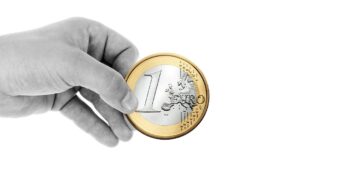Mastering Rapid Debt Elimination: Strategies for Financial Freedom
In today’s economy, managing and eliminating debt is a priority for many individuals seeking financial stability and independence. Adequate planning, strategic actions, and maintaining discipline are key to accelerating the process of debt repayment. This comprehensive guide dives into effective strategies for rapid debt elimination, helping pave the way for financial freedom.
Understanding Debt and Its Impacts
Debt can often seem like a financial black hole, but understanding your debt is the first step towards managing it. Typically, debts are classified into secured (like mortgages and car loans) and unsecured debts (such as credit cards and personal loans). High-interest rates on unsecured debts can compound quickly, making them particularly problematic for financial health.
Assessing Your Debt Situation
Begin by listing all your debts, including the creditor, total amount of the debt, interest rate, and monthly payment. This visibility will help you prioritize which debts to pay off quickly and which ones to monitor more closely. Tools like debt calculators or services from financial advisors can also provide insights and assist in creating effective repayment strategies.
Effective Debt Elimination Strategies
The Avalanche Method
This method involves paying off debts with the highest interest rates first while maintaining minimum payments on other debts. By doing so, you save money on interest over time, which can then be rerouted to tackle other debts more efficiently.
The Snowball Method
Contrary to the Avalanche Method, the Snowball Method focuses on paying off the smallest debts first, regardless of the interest rate. This psychological win provides momentum and motivation to deal with larger debts, creating a ‘snowball effect’ as you eliminate each smaller debt.
Debt Consolidation
Debt consolidation involves combining multiple debts into a single, larger debt with more favorable pay-off terms, such as a lower interest rate. This can simplify monthly payments and potentially lower payment amounts. However, this method typically requires a good credit score to secure advantageous terms.
Balance Transfer Cards
If credit card debt is your primary concern, consider a balance transfer credit card. These cards often offer an introductory period with 0% interest, providing a window in which you can pay down the principal balance significantly without accruing additional interest.
Budgeting and Expense Management
Integral to any debt elimination strategy is stringent budgeting and expense management. Creating a budget that prioritizes debt repayment while trimming non-essential expenses maximizes the funds available for debt elimination.
Utilizing Budgeting Tools
Take advantage of budgeting tools and apps that help track spending patterns, set up budgets, and alert you when you exceed your spending limit. Regular reviews of your budget are crucial, as they help adjust to new financial situations or fiscal responsibilities.
Increasing Your Income
Increasing your income can accelerate the debt elimination process. Consider options such as freelancing, starting a side business, or even negotiating a raise. Additional income can be directly allotted to debt repayment, speeding up the overall process.
Side Hustles and Passive Income Streams
Explore opportunities for side hustles or passive income. Whether it’s freelance writing, online tutoring, or investing in dividend-yielding stocks, extra income sources can make a significant impact on your debt repayment timeline.
Maintaining Financial Discipline
Maintaining financial discipline is perhaps the most challenging yet crucial part of debt elimination. Regularly review your financial plan, resist accruing new debt, and stay focused on your long-term goals of financial freedom.
Avoiding New Debt
While repaying existing debt, it’s important to curtail the habit of creating new debt. Avoid splurges and reconsider major financial decisions that could increase your indebtedness.
Regular Financial Reviews
Conducting regular reviews of your financial progress is essential. Adjust your strategies based on what is or isn’t working and keep a close watch on your financial health.
Frequently Asked Questions (FAQs) About Debt Elimination
How long does it take to eliminate debt?
The timeline for debt elimination varies based on the total debt, your income, expenses, and the strategies you implement. Typically, with consistent effort, significant progress can be made within three to five years.
Is it better to pay off debt or save money?
Prioritizing debt repayment, especially high-interest debt, is usually more beneficial than saving. This is because the money saved on interest usually outweighs the return on most savings. However, maintaining a basic emergency fund while paying down debt is advisable.
Can debt elimination impact my credit score?
Initially, some actions like closing credit accounts or opening new ones for balance transfers might impact your credit score. However, as you reduce your debt burden and make timely payments, your credit score is likely to improve.
In conclusion, mastering rapid debt elimination requires a combination of understanding your debts, implementing effective strategies, maintaining strict budget control, and boosting income. By following these steps diligently, achieving the goal of financial freedom is not only plausible but achievable.



























































